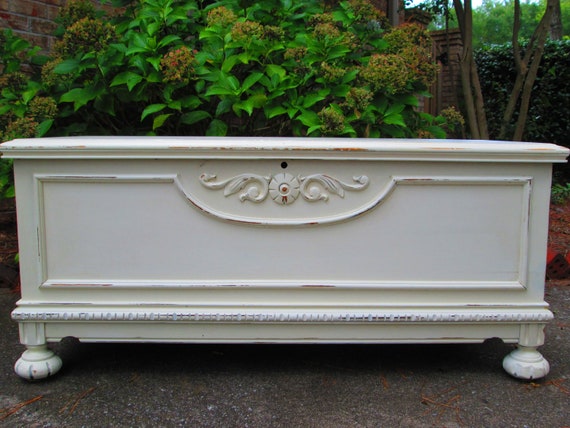All of us—women, men, youth, and children,
single or married—
can work at being homemakers.
- Sister Oscarson
I want my children to feel confident that they, through faith and hard work, can successfully create a home of their own someday. To prepare them for that work we have helped them begin their own hope chests. We are doing this for both our sons and daughters. When we first started I found a valuable resource, a blog called
Miss Abigail's Hope Chest. The author of that blog wrote:
"The hope chest represents that deliberate choice to prepare, even ahead of time, a comforting home. It is a physical act that reflects a desire to provide for the future... Beyond the collection of recipes and cookware is the mastery of their use. Behind the careful embroidery on the pillowcases is the recognition that beauty adds cheer and satisfaction to our life. From the woven potholders and knitted dishcloths to the crocheted lace and patchwork quilts, a hope chest simply reveals hands that are trained to do things."
What can you use as your hope chest?
Although many hope chests have been kept in beautiful cedar chests our home does not have room for that many wooden boxes! So, for now at least, most of our children are keeping their things in a sweater box under their beds or in a bottom drawer. Don't be paralyzed by this step! You can start by keeping things in a shoebox!
What will you put in your hope chest?
Books
Remember that book that your child loved as a toddler and you read and reread until you had it memorized? Wouldn't that be a fun thing for them to read to their own children? Each Christmas we give our children a book for their own personal library. We write their name and age in the front of the book and share with them our hope that they will enjoy it and take care of it so they will be able to share it with their own children. A cookbook you use regularly, or that Christmas book you read every year would also be welcome additions. By adding books we hope our children will bless their families by sharing books and their love of learning.
 |
The Little Engine That Could was a gift from Grandpa Scott who loved it as a child.
My Father's Dragon is the first chapter book I have read to each of my children and a family favorite. |
Kitchen Supplies
Try to find things that will not age. Plastic bowls might be brittle and useless when they are finally put into use. Consider giving a gift each Christmas or birthday that can go into their hope chest. Two glass pie pans with recipes and the promise of making some pies together is a fun gift. Bread pans, a rolling pin, wooden spoons, hot pads, washcloths and hand towels are all things that will be useful for many years. By adding kitchen supplies we hope our children will recognize the value of shared meals and healthy foods that nourish good physical and mental health.
 |
My nine year old daughter made these hot pads by sewing along the lines of a printed fabric.
It is a fun beginner sewing project. |
Tools
My grandma had a little pink tool set that she kept in a kitchen drawer, it had basic tools that she used regularly to fix little things around the house. Every college student, missionary, and parent should have a set of basic tools and the skill to use them properly. We want to encourage all our children to be able to keep their homes in good repair and to fix small problems before they become larger.
Baby Items
This is a fun category because things for babies are often small and quick to put together- teach your child to sew some bibs, some flannel blankets, embroider some onesies, knit some sweet baby hats, paint and sand up a small set of blocks or some train cars. Help your child save some things from when they were a baby, a blessing dress or outfit, a small pair of shoes, a favorite blanket or toy. Having something set aside for a baby will increase their confidence in welcoming future children.
 |
| A blessing dress, shoes and bonnet. |
Holiday Items
A shoe box with a birthday banner, some candles, balloons and some hand-crafted cards will allow your child to celebrate birthdays in the future with festivity and love. A nativity your child can look forward to displaying in their future home, Christmas hot pads, or a beautiful platter or dish would all be festive and fun during the holidays in their future homes. We want to equip our children to carry on meaningful and happy traditions.
 |
This birthday banner was made of scraps and the kids look forward to seeing it
hanging over the table when they wake up on their birthdays. |
Handmade Cards
Cards can be made for very little, and the sky is the limit for possibilities. Encourage your child to develop the skill of writing a thoughtful thank you note, or birthday wishes to a loved one. Keep a stack of cards in their hope chest and encourage them to use them regularly, even now.
 |
We used up some cute paper scraps and practiced some sewing skills.
The cards are made with half a sheet of paper or card stock. |
Recipes
In our home when you can independently cook a dish you are encouraged to add the recipe to your personal recipe cards. Help your child gather a collection of recipes from your home- include family favorites, recipes that have been handed down, and foods you serve regularly over the holidays.
 |
| We make nests every spring using a no-bake cookie recipe and jellybeans. |
I know some people hesitate to create a hope chest because they are concerned that by the time their child is an adult their tastes will be different and the things in their hope chest will be useless. I think with careful planning that can be minimized, but it will still happen. Some of the things your child tucks away might not ever be used. But they are still useful. First, because the items helped build confidence and hope for the future, and second, because they helped build the invisible hope chest.
What is the Invisible Hope Chest?
The invisible hope chest grows as the physical one does. Those pot holders your child made out of mismatched colors that you know they won't use in twenty years? The value is not in the pot holder, but in the skill your children carry within themselves.
We can start today to give our children an invisible hope chest full of skills they can use to bless their families. Let us be deliberate in helping them build and plan and prepare for building a home that is warm and that welcomes the Spirit. Start small, but start! As you work towards, and talk about their future homes, the Spirit will encourage you and plant hope in their hearts for the future.
 |
| This boy raised the chickens that now provide our eggs each day. |
As the author of Miss Abigail's Hope Chest concluded,
"We don’t always know what our future holds. But some kind of home will be part of it. You can make it what you want it to be; what you hope it will be. That is the purpose of a hope chest."
 |
Stitched by Katy when she was ten.
Little kits like this are available at WalMart for $1.
They make a cute stocking stuffer. |
































.JPG)